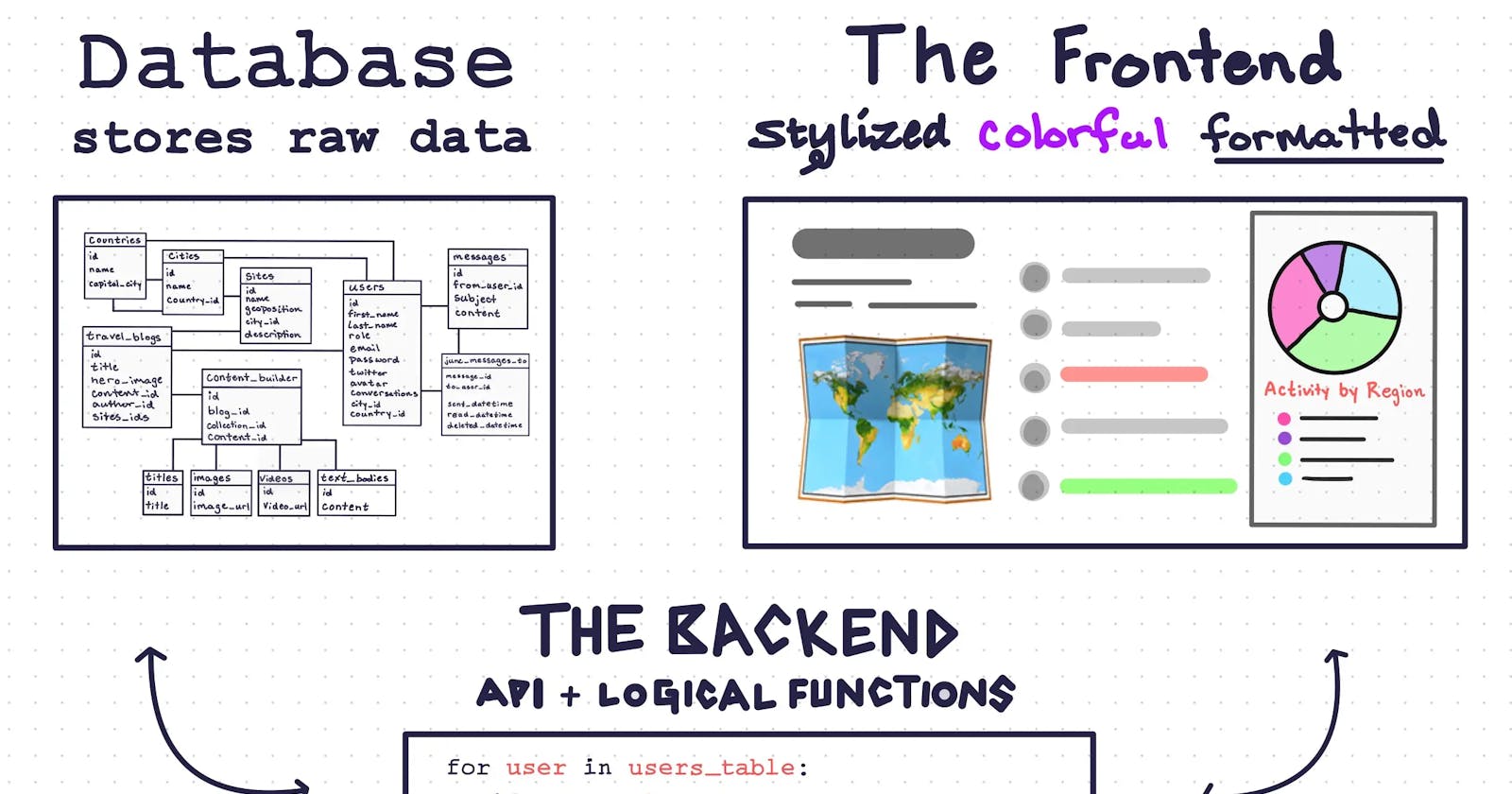Crafting Digital Worlds: A Masterclass in Artful Data Modeling for Backend Brilliance
Introduction:
Data modeling is the backbone of backend development, shaping the structure and organization of data within applications. This comprehensive guide aims to provide an in-depth exploration of data modeling in backend development, covering fundamentals, best practices, and advanced techniques. From database design to relationships and optimization strategies, this guide equips developers with the knowledge to architect robust and scalable backend systems.
Understanding Data Modeling:
Definition and Purpose:
- Data modeling is the process of defining and structuring data entities, relationships, and attributes to represent the real-world information in a database. Its purpose is to ensure data integrity, efficiency, and maintainability.
Relational vs. Non-Relational Databases:
- Comparing and contrasting the characteristics of relational (SQL) and non-relational (NoSQL) databases, understanding when to choose each based on project requirements.
Foundations of Data Modeling:
Entities and Attributes:
- Defining entities as objects or concepts in the data model and identifying their attributes, which represent the properties or characteristics of entities.
Relationships:
- Establishing relationships between entities, including one-to-one, one-to-many, and many-to-many relationships. Understanding cardinality and normalization principles.
Normalization:
- The process of organizing data to reduce redundancy and improve data integrity. Understanding normal forms and their application in backend data modeling.
Database Design and Schema:
Choosing the Right Database:
- Evaluating project requirements and selecting an appropriate database system (e.g., MySQL, PostgreSQL, MongoDB) based on factors like data structure, scalability, and performance.
Schema Design:
- Crafting a well-defined database schema that reflects the relationships and constraints between entities. Balancing the need for flexibility and performance in schema design.
Indexing and Performance Optimization:
- Utilizing indexes to enhance query performance, understanding the trade-offs in indexing, and optimizing the database schema for speed and efficiency.

Advanced-Data Modeling Concepts:
Inheritance and Polymorphism:
- Applying concepts of object-oriented programming to data modeling, exploring techniques like table inheritance and polymorphic associations.
Denormalization:
- Understanding when and how to denormalize data for performance optimization, considering factors like read vs. write operations and query complexity.
Temporal Data Modeling:
- Modeling temporal data, including valid time intervals and handling historical data changes. Implementing effective date ranges and versioning for temporal databases.
Data Modeling in RESTful APIs:
Resource Modeling:
- Mapping data models to RESTful resources, ensuring a consistent and intuitive API design. Strategies for handling nested resources and complex relationships.
DTOs (Data Transfer Objects):
- Implementing DTOs to control data exposure in API responses, enhancing security and reducing unnecessary data transfer.
Real-world Examples and Best Practices:
User Authentication and Authorization:
- Designing data models for user authentication and authorization systems, including considerations for roles, permissions, and secure password storage.
E-commerce Product Catalog:
- Modeling a product catalog for an e-commerce application, including considerations for categories, variants, and inventory management.
Social Media Network:
- Designing data models for a social media platform, addressing challenges such as user relationships, posts, comments, and activity feeds.
Evolution and Maintenance:
Versioning and Migration:
- Strategies for versioning data models to handle changes over time, including backward and forward compatibility. Implementing seamless database migrations.
Monitoring and Performance Tuning:
- Establishing monitoring systems to track database performance, identifying bottlenecks, and implementing performance tuning strategies as the application evolves.
Conclusion:
Data modeling is a foundational skill in backend development, influencing the performance, scalability, and maintainability of applications. This comprehensive guide has explored the nuances of data modeling, covering fundamentals, advanced concepts, and real-world examples. Armed with this knowledge, developers can architect robust backend systems, ensuring that data is structured, organized, and optimized to meet the evolving needs of modern applications.
Thank you for your time. Hope you loved it.

